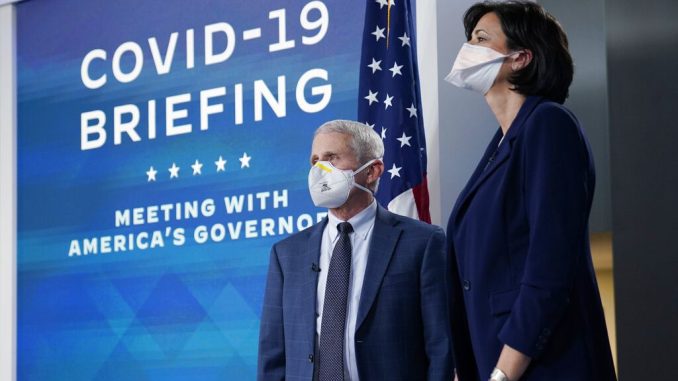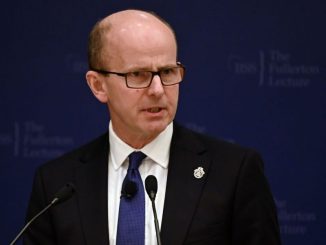

Dr. Anthony Fauci, White House Chief Medical Advisor and Director of the NIAID and Dr. Rochelle Walensky, Director of the Centers for Disease Control and Prevention, arrive to participate in the White House COVID-19 Response Team’s regular call with the National Governors Association in the South Court Auditorium in the Eisenhower Executive Office Building on the White House Campus, Monday, Dec. 27, 2021, in Washington. (AP Photo/Carolyn Kaster)
OAN Newsroom
UPDATED 6:45 AM PT – Thursday, December 30, 2021
CDC Director Rochelle Walensky has continued to change her messaging for COVID-19.
How long have the “experts” at the CDC known that PCR tests could stay positive for 12 weeks? Why are they just NOW changing their guidelines? Is this driven by “science” or is it driven by Biden’s terrible poll numbers? Biden’s incompetence now defines this administration!
— Ronny Jackson (@RonnyJacksonTX) December 29, 2021
The the national public health agency has been put under scrutiny recently for its new guidance, which was released Monday and shortens the isolation time for people who have COVID yet are asymptomatic from 10 to five-days. Those in isolation will also no longer need to take a test to make sure they are no longer infected once the five-day period is over.
“People are most infectious in the one to two days before symptoms develop and the two to three days after,” said Walensky. “After five days, the risk of ongoing transmission decreases.”
This marks a huge change from the CDC’s guidelines near the start of the pandemic when they recommended a 14-day quarantine period all throughout 2020. In defense of the changes Wednesday, Walensky claimed she was simply following the science.
“My job right is to take all of the science and the information that we have and to deliver guidance and recommendations to the American people that adapted to the science at hand,” she stated. “This pandemic has given us a lot of new, updated science over the the last two years and it is my job to convey that science through those recommendations and that is exactly what we are doing.”
Additionally, in a separate interview with CNN, the CDC director claimed human behavior also played a role in the decision.
“The behavior science: what will people actually do when people need to get back to work? What is is that they’ll actually do?” she asked. “And if we can get them to isolate, we do want to make sure they are isolating in those first five-days when they are maximally infectious.”
While elaborating further, Walensky said because many people haven’t been isolating when they need to, so they changed the guidance to reflect what people may actually be willing to do.
“Well so it really had a lot to do with what we thought people would be able to tolerate,” she expalined. “We have seen relatively low rates of isolation for all of this pandemic. Some science has demonstrated less than a third of people are isolating when they need to and so we really want to make sure that we had guidance in this moment where we were going to have a lot of disease that cold be adhered to, that people were willing to adhere to, and that spoke specifically to when people were maximally infectious.”
Walensky’s comments come as COVID cases are on the rise throughout the U.S. Omicron is now the dominant strain, however, accounting for over 58 percent of new cases according to the CDC. The national public health agency also acknowledged while Omicron is more infectious than other strains, many cases are either mild or asymptomatic.






Be the first to comment